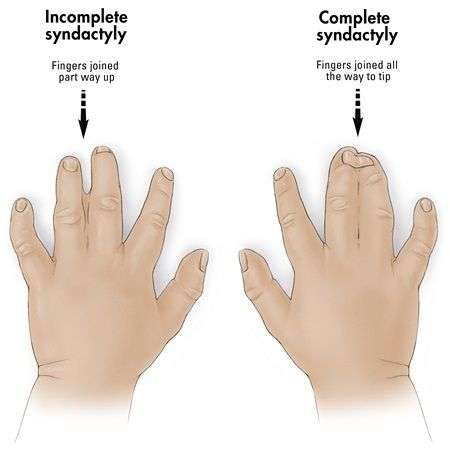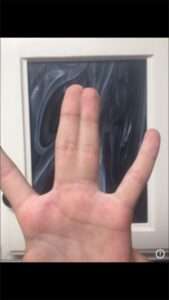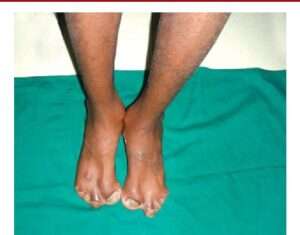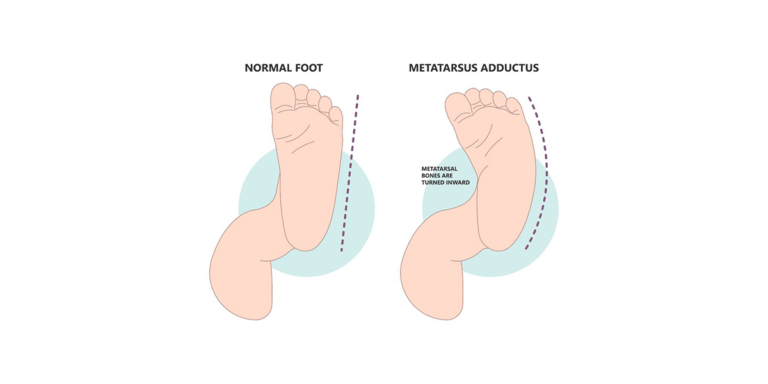WHAT IS SYNDACTYLY OR WEBBED FINGERS?
- Dr Owais Rafiq
- August 16, 2024
- 2:46 am

It is a condition that is present at birth. Characteristic features include:
- The complete fusion of fingers and/or toes
- Simply webbing of digits.
Incidence of SYNDACTYLY OR WEBBED FINGERS?

This condition is fairly common and makes the most common pediatric congenital hand issues. Statistics show that up to 100 children in every 2,500 are affected by syndactyly or webbed fingers.
Boys are affected by syndactyly more frequently than girls. It is also observed that whites more often have this condition than blacks or Asians.
How can You Identify SYNDACTYLY?
Though every digit can be manipulated, the condition most commonly arises between the middle and ring fingers.
The skin flap linking the finger segments) looks like webbing or else in other cases the fused fingers look almost like a single finger.
ARE ALL THE SYNDACTYLY SAME?
Syndactyly or webbed fingers may be simple meaning that only soft tissues may be involved without the presence of any bony connections between the fused or webbed digits.
Complex syndactyly is the one in which there is a side-to-side complete connection between the involved digits.
It may also be complete syndactyly wherein the skin extends to the fingertips or incomplete where the skin does not extend to the fingertips.
Syndactyly may sometimes be associated with medical syndromes but that is occasional.
WHAT IS THE REASON FOR THE DIGITS BEING WEBBED?
Through pregnancy, a baby’s hand appears as a paddle. It will later transform into a different finger. This Happens during the early stages of the child’s development (about two months) which is 6-8 weeks of pregnancy.
Syndactyly or webbed fingers is the condition when two or more fingers do not separate at this time.
In most cases, this congenital condition involves overlapping of two or more fingers or toes that tend to run in families and have a genetic predisposition so that nearly 40% of the children with this condition will inherit it from their parents. It might be an inherent part of certain genetic syndromes (i.e. Apart or Poland’s Syndrome).
What are the available treatments for syndactyly?

Mostly, syndactyly of the toes does not need surgery, and the child will be able to walk and run well.
In the case of syndactyly or webbed fingers of the hand, however, surgery offers an improved chance of hand function
Release of syndactyly is usually done between the ages of 1-2 years for the child in order to optimize the use of hand function for daily activities and before there is development of hand dominance in children
During the surgery, skin is split evenly between the 2 fingers however on certain occasions a child may require a graft or a skin substitute to cover the newly separated finger which is usually taken from the abdomen, elbows or upper arm. This is usually the case if the child is older at the time of surgery.
If multiple digits are involved in the syndactyly process, then the procedure is performed in 2 stages meaning that one side of the digit is released at a time to avoid compromising vascularity.
The digits with significant length differences are released first to avoid growth disturbances. In the case of bilateral hand involvement, release can be performed simultaneously if the child is small but if the child is more than 1.5 years of age then the syndactyly release has to be staged.

WHAT HAPPENS AFTER THE SURGERY FOR SYNDACTYLY RELEASE?
After syndactyly release, the one affected by this congenital deformity wears a plaster or bandage for 2-3 weeks, covering the hand, and lower arm, for the sake of keeping the hand still and the injured skin secured. A splint is usually placed between the fingers to keep them apart, after plaster removal.
Occupational therapy after syndactyly release is recommended to reduce scarring and improve hand function.
DOES SYNDACTYLY-RELEASE SURGERY HAVE ANY SIDE EFFECTS? Some children who have had the surgery experience a condition called WEB CREEP.
It may occur early on after surgery and is most commonly caused by necrosis of the tip of the flap or loss of skin graft placed in the web area. Late creep is caused by growth discrepancy between the scar and graft tissue making it look like syndactyly is coming back
This type of complication is more common when the digits are separated before the age of 1 year.
In summary syndactyly or webbed fingers is a fusion of digits that can be complete or incomplete being the most common type of birth deformity seen in children.
Treatment usually is carried out by the age of one year to 18 months and consists of surgical separation of the webbed fingers surgically.
Children with syndactyly can do all the usual things as their peers
Dr Owais Rafiq
Subscribe to Dr Owais YouTube channel
For parenting advice, child health, symptoms, causes and treatment of illness in children.





